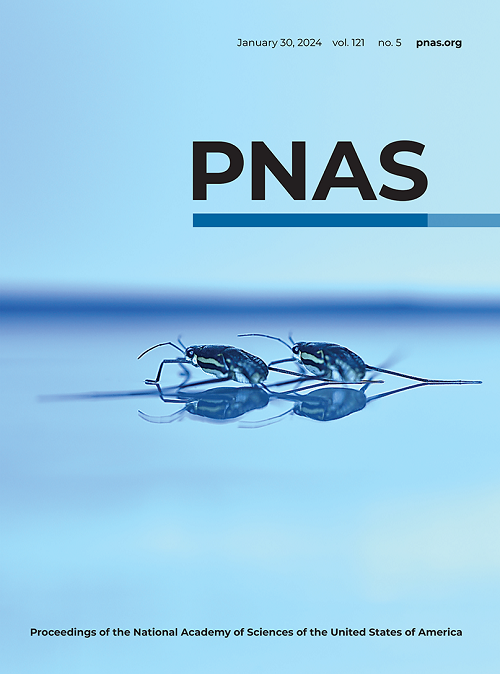Epigenetic instability and hypofunctionality of fetal Tregs allow a permissive regulatory environment for T effector memory maturation.
IF 9.4
1区 综合性期刊
Q1 MULTIDISCIPLINARY SCIENCES
Proceedings of the National Academy of Sciences of the United States of America
Pub Date : 2025-07-24
DOI:10.1073/pnas.2506673122
引用次数: 0
Abstract
The human gestational environment is commonly perceived to be predominantly suppressive and incompatible for T effector maturation. However, evidence of a competent effector fetal environment is mounting in the field. Here, we employed a high parametric, mass cytometry-based approach to study the fetal circulatory and microenvironmental immunomes, with the aim to understand the inception and extent of fetal effector T cell priming and its relation with regulatory mechanisms. We found evidence of fetal thymic immune imprinting, coupled with both circulatory and tissue effector memory development. Correspondingly, in the regulatory compartment, we detected the presence of Tbet+Treg in fetal tissues at elevated levels compared to adult tissues. Fetal Tregs, though capable of suppression, were hyposuppressive as compared with adult counterparts. We found that a proportion of fetal Tregs lost FoxP3 commitment during proliferation and exhibited higher TCR clonotype sharing with effector T cells, indicating higher plasticity in fetal Tregs than adult. Epigenetic profiling of the FoxP3 promoter locus reveals that fetal Tregs were only partially demethylated, possibly explaining the observed instability. In summary, our data provide evidence of a regulatory environment in the 2nd trimester permissive for T effector maturation, in part contributed by the relative instability and hypofunctionality in fetal Tregs.胎儿treg的表观遗传不稳定性和功能低下为T效应记忆成熟提供了一个宽松的调节环境。
人类妊娠环境通常被认为是主要抑制和不相容的T效应成熟。然而,有证据表明胎儿环境是有效的。在这里,我们采用了一种高参数、基于大量细胞计数的方法来研究胎儿循环和微环境免疫,旨在了解胎儿效应T细胞启动的开始和程度及其与调节机制的关系。我们发现了胎儿胸腺免疫印记的证据,伴随着循环和组织效应记忆的发展。相应地,在调控室中,我们检测到与成人组织相比,胎儿组织中Tbet+Treg的水平升高。胎儿Tregs虽然有抑制作用,但与成年Tregs相比,其抑制作用较弱。我们发现,一部分胎儿Tregs在增殖过程中失去了FoxP3的承诺,并与效应T细胞表现出更高的TCR克隆型共享,表明胎儿Tregs比成人具有更高的可塑性。FoxP3启动子位点的表观遗传分析显示,胎儿Tregs仅部分去甲基化,这可能解释了观察到的不稳定性。总之,我们的数据提供了证据,证明妊娠中期的调节环境允许T效应物成熟,部分原因是胎儿treg的相对不稳定和功能低下。
本文章由计算机程序翻译,如有差异,请以英文原文为准。
求助全文
约1分钟内获得全文
求助全文
来源期刊
CiteScore
19.00
自引率
0.90%
发文量
3575
审稿时长
2.5 months
期刊介绍:
The Proceedings of the National Academy of Sciences (PNAS), a peer-reviewed journal of the National Academy of Sciences (NAS), serves as an authoritative source for high-impact, original research across the biological, physical, and social sciences. With a global scope, the journal welcomes submissions from researchers worldwide, making it an inclusive platform for advancing scientific knowledge.

 求助内容:
求助内容: 应助结果提醒方式:
应助结果提醒方式:


